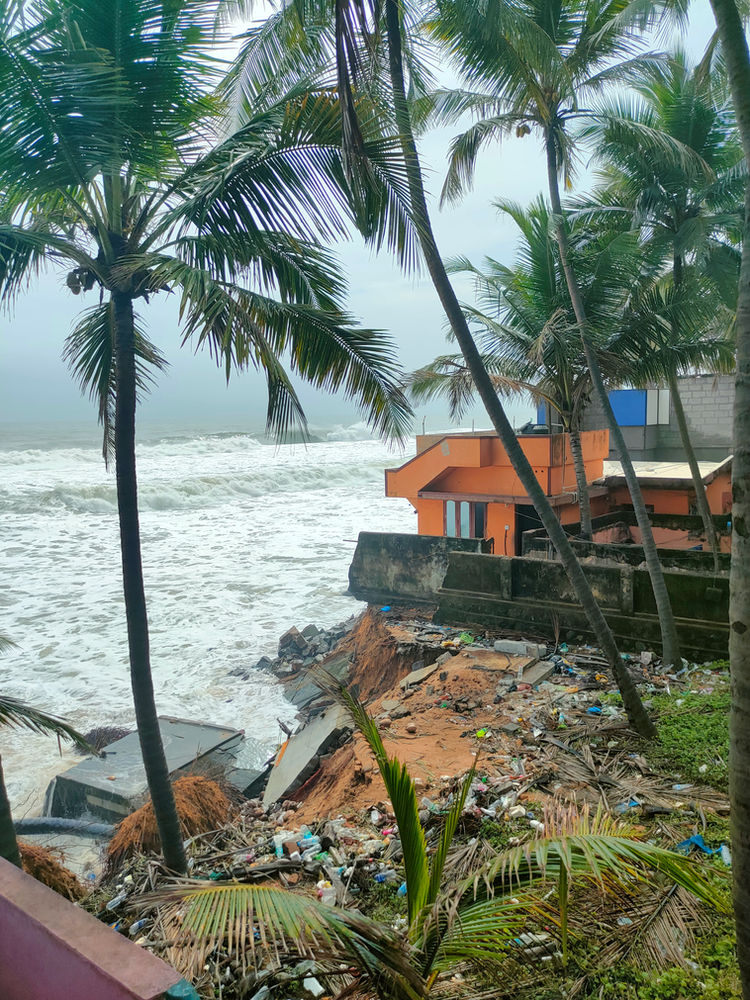
Introduction
Climate change has emerged as one of the pressing issues of the 21st century. Climate change is like a pandemic, it does not spare even the most advanced countries. Weather and climatic extremes are becoming more common as a result of human-caused climate change across the world. Acute occurrences of storms, droughts, floods, cyclical fluctuations in precipitation and long-term variations in temperature and sea levels, are all made more likely by climate change. This will result in deaths, injuries, and poor health related diseases, as well as damage to infrastructure, livelihoods and natural resources. Marginalised communities who live in old and substandard houses and have limited resources are especially susceptible to floods and cyclones. Approximately 40% of the world’s population now lives within 100 km of a coastline and 100 m of sea level. it is anticipated that by 2030 half of the world’s population would reside in coastal areas. As per the World Bank study (2018), climate change will relocate 143 million people in sub-Saharan Africa, Latin America, and south Asia. Climate proofing the houses and infrastructure for all is a necessity.
Climate change and vulnerability of India’s Coastal infrastructure
India is one of the most vulnerable countries to the effects of climate change and simultaneously suffers from endemic levels of poverty. In recent years, India has experienced an increase in the severity and frequency of weather events and climate-related natural disasters.India is the third-worst-affected country due to the climatic disasters. In India 170 million people live in the coastal regions. According to the Internal Displacement Monitoring Centre, between 2008 and 2018, over 3.6 million Indians were moved every year, the majority as a result of monsoon rains, which are the heaviest in South Asia. As per the report Human Cost of Disasters (2000-2019) published by the United Nations Office for Disaster Risk Reduction, India has the third highest number of disaster events. It is also the second most impacted country by floods with 345 million people affected. Extreme cyclones namely the recent Yaas, Amphan, Fani, Gaja, and Hudhud, as well as catastrophic floods, have wreaked havoc on its coastal states of Odisha, Andhra Pradesh, Tamil Nadu, and Kerala. The mangrove ecosystem, which acts as a natural barrier against cyclones and coastal erosion in coastal areas, has been badly harmed and is expected to be further harmed as an outcome of climate change. According to estimates from the Central Water Commission, the total damage from climate-related extreme weather events on infrastructure and housing is more than INR 36 million, or 3% of India’s GDP.
The major cyclone Fani hit Odisha with a population of around 46 million people, in May 2019. State authorities used an effective early-warning system to evacuate 1.2 million people in 24 hours, making it one of the largest evacuations in history and earning praise from the United Nations. With the increasing effects of climate change, tens of thousands more people may be forced to migrate or be displaced from high-risk areas along the Indian coast. Many families may be forced to relocate within their own state or further afield to avoid the effects of sea level rise and coastal inundation if concrete climate and development action is not taken. It is imperative that climate resilient infrastructure and houses are built which are affordable, safe and adequate which could benefit the people living in poverty.
Safeguarding future prosperity
Acknowledging the effects of climate change on our lives and directing all our resources and efforts towards the attainment of climate resilience is important. Climate resilience refers to the ability to predict, prepare for, and assess how climate change can create hazardous events and take steps to cope with such events. Adaptation to climate change for people living in coastal areas is a necessity. Infrastructure that is both accessible and functional is critical to human well-being and economic progress. People living in coastal areas are vulnerable to triple threats which are limited resources for affordable housing infrastructure, socioeconomic vulnerability, and increased flooding due to sea level rise.
Analysis
As climatic conditions worsens and extreme weather events like floods, storms and cyclones are becoming normal in the climate-constrained weather. To maintain the global average temperature below the Paris Agreement’s 1.5 degree safe limit, collaborative action and funding is required. Government and Non Governmental Organisation should come together to take preventive measures which would ultimately reduce disaster risks and post recovery losses. It is imperative to invest in making climate resilient housing for the people. There is a huge requirement of funds which can be solved if the government incentivises private investors to enter into the long term contracts with Development Financial Institutions to work on innovative and sustainable houses for the marginalised communities. If appropriately managed, relocating communities from hazard-prone places can be a valuable adaptation strategy for providing alternatives to physical protection. However, there is a need for more forward looking sustainable housing planning to protect the people living in coastal areas who are vulnerable. Sensitising and raising awareness amongst the people about the benefits of climate resilient houses is also a significant component for the planning. Furthermore, strong community demand and community support can lead to decision-makers and planners reaching a consensus. Currently, India’s construction industry is altering its building processes in order to minimise greenhouse gas emissions and make sustainable buildings more accessible to individuals with limited financial resources. Failure to do so sufficiently will put marginalised communities in more danger in the future.
Abhinav is an Practicing Advocate based out of Delhi & Parth is a law Scholar.















